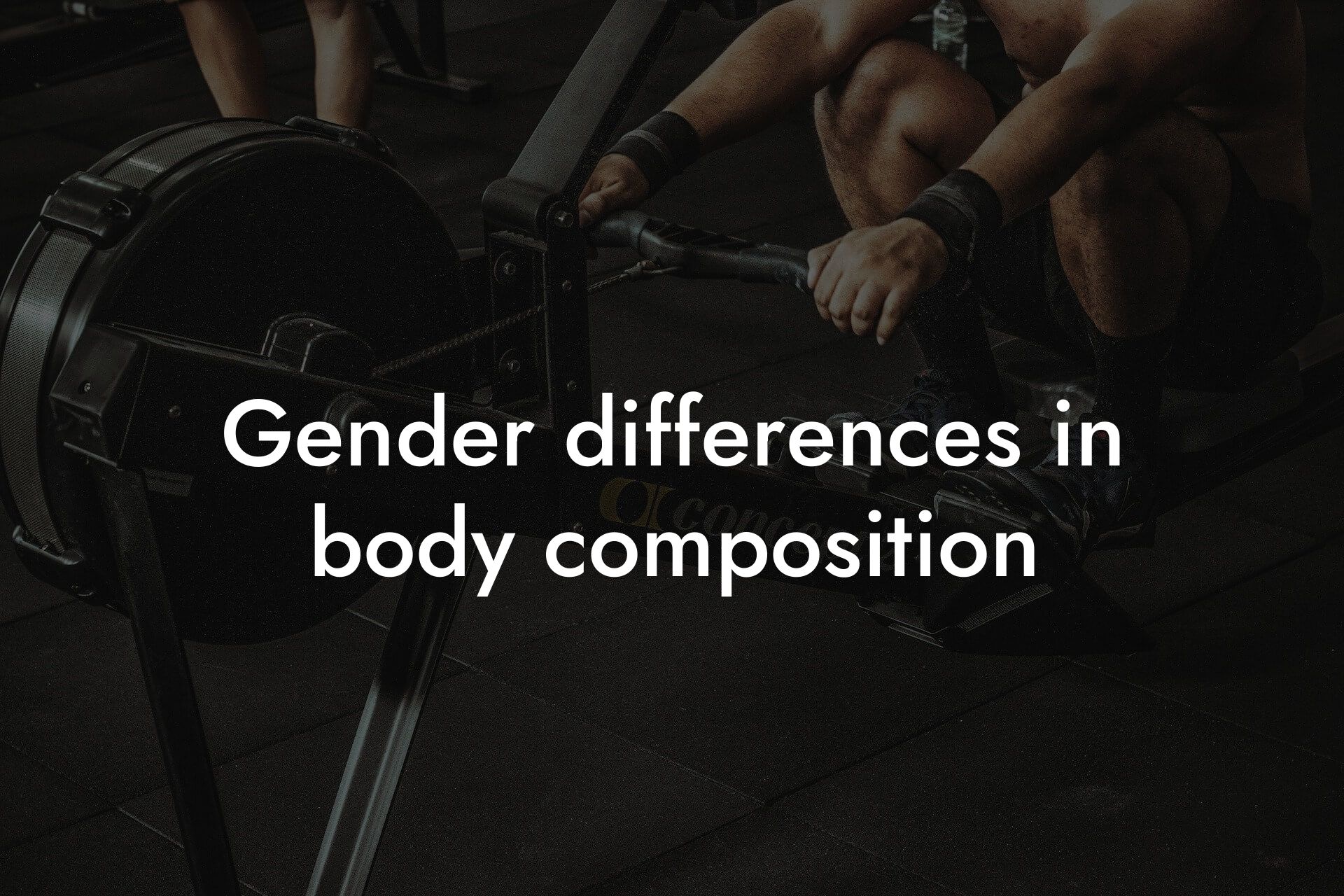Muscle asymmetry, a condition where one side of the body has stronger or more developed muscles than the other, is a common issue that can have a significant impact on overall body performance. As high-earning professionals, you understand the importance of maintaining a healthy and balanced physique to take your business to the next level. At Tano Performance Group, we use advanced DEXA technology to provide a comprehensive body assessment, helping you identify areas for improvement, including muscle asymmetry.
Table of Contents
What Causes Muscle Asymmetry?
Muscle asymmetry can arise from a variety of factors, including:
Genetic predisposition: Some people may be naturally more prone to muscle imbalances due to their genetic makeup.
Injury or trauma: Injuries or trauma to one side of the body can lead to muscle imbalances as the body compensates for the affected area.
Poor posture: Habitual poor posture can cause certain muscles to become overactive or underactive, leading to asymmetry.
Repetitive movements: Engaging in repetitive movements, such as golf or tennis, can cause muscle imbalances due to the repetitive strain on specific muscles.
Weak core muscles: A weak core can contribute to muscle asymmetry as the body compensates for the lack of stability.
The Impact of Muscle Asymmetry on Performance
Muscle asymmetry can have a significant impact on overall body performance, leading to:
Reduced strength and power: Muscle imbalances can limit your ability to generate force and power, making it more challenging to perform everyday tasks and athletic activities.
Decreased endurance: Asymmetry can lead to fatigue and decreased endurance, making it harder to sustain physical activity over time.
Increased risk of injury: Muscle imbalances can increase the risk of injury as the body compensates for the weaker side, putting additional stress on joints and muscles.
Poor posture and alignment: Muscle asymmetry can lead to poor posture and alignment, which can further exacerbate muscle imbalances and increase the risk of injury.
The Role of DEXA Technology in Identifying Muscle Asymmetry
At Tano Performance Group, we use advanced DEXA technology to provide a comprehensive body assessment, including the identification of muscle asymmetry. DEXA (Dual-Energy X-ray Absorptiometry) scans use low-level X-rays to measure bone density, muscle mass, and body fat percentage, providing a detailed picture of your body composition.
Our DEXA scans can help identify muscle imbalances by measuring the difference in muscle mass between the left and right sides of the body. This information can be used to create a personalized training program to address muscle asymmetry and improve overall body performance.
Exercises to Correct Muscle Asymmetry
Correcting muscle asymmetry requires a targeted exercise program that addresses the specific muscle imbalances. Some exercises that can help correct muscle asymmetry include:
Single-arm rows: This exercise targets the latissimus dorsi muscles, helping to correct imbalances in the upper body.
Single-leg squats: This exercise targets the quadriceps and hamstrings, helping to correct imbalances in the lower body.
Planks: This exercise targets the core muscles, helping to improve overall stability and reduce muscle asymmetry.
Rotational exercises: Exercises that involve rotational movements, such as rotational medicine ball throws, can help improve muscle balance and coordination.
Stretching and Foam Rolling for Muscle Asymmetry
In addition to exercise, stretching and foam rolling can also play a crucial role in correcting muscle asymmetry. Stretching can help lengthen tight muscles, while foam rolling can help reduce muscle tension and improve circulation.
Some stretches that can help correct muscle asymmetry include:
Chest stretches: Stretching the chest muscles can help improve posture and reduce muscle imbalances in the upper body.
Shoulder stretches: Stretching the shoulder muscles can help improve range of motion and reduce muscle imbalances in the upper body.
Hip flexor stretches: Stretching the hip flexor muscles can help improve flexibility and reduce muscle imbalances in the lower body.
The Importance of Proper Training and Progression
Correcting muscle asymmetry requires a gradual and progressive training program that addresses the specific muscle imbalances. It's essential to start with exercises that target the weaker side of the body and gradually increase the intensity and difficulty as the muscles adapt.
Proper training and progression can help:
Improve muscle balance and coordination
Reduce the risk of injury
Enhance overall body performance
Muscle asymmetry is a common issue that can have a significant impact on overall body performance. By understanding the causes of muscle asymmetry, identifying imbalances through DEXA technology, and incorporating targeted exercises and stretches, you can take the first step towards correcting muscle asymmetry and improving your overall physique. At Tano Performance Group, we are committed to helping high-earning professionals like you achieve their fitness goals and take their business to the next level.
Frequently Asked Questions
What is muscle asymmetry?
Muscle asymmetry refers to a condition where there is a significant difference in strength, size, or function between the left and right sides of the body. This can occur in any muscle group, but it is most common in the arms, legs, and core.
What causes muscle asymmetry?
Muscle asymmetry can be caused by a variety of factors, including genetics, injury, poor posture, and uneven training habits. In some cases, it may also be a result of underlying medical conditions such as scoliosis or muscular dystrophy.
How does muscle asymmetry affect body performance?
Muscle asymmetry can significantly impact body performance by affecting balance, coordination, and overall athletic ability. It can also lead to poor posture, decreased strength, and increased risk of injury.
Can muscle asymmetry be corrected?
Yes, muscle asymmetry can be corrected with targeted exercises and training programs. It is essential to identify the underlying cause of the asymmetry and develop a personalized plan to address it.
How do I know if I have muscle asymmetry?
If you notice any of the following signs, you may have muscle asymmetry: uneven strength, poor posture, or difficulty performing exercises on one side of your body. You can also consult with a fitness professional or doctor for a proper assessment.
What are the consequences of ignoring muscle asymmetry?
Ignoring muscle asymmetry can lead to a range of negative consequences, including decreased athletic performance, increased risk of injury, and chronic pain. It can also affect overall health and wellbeing.
How does muscle asymmetry affect athletic performance?
Muscle asymmetry can significantly impact athletic performance by affecting speed, agility, and power. It can also lead to poor technique and increased risk of injury.
Can muscle asymmetry be prevented?
While some cases of muscle asymmetry may be unavoidable, it can be prevented in many cases by maintaining good posture, engaging in regular exercise, and avoiding uneven training habits.
What are the most common areas affected by muscle asymmetry?
The most common areas affected by muscle asymmetry are the arms, legs, and core. However, it can occur in any muscle group.
How does muscle asymmetry affect daily activities?
Muscle asymmetry can affect daily activities such as walking, running, and lifting, making them more challenging and increasing the risk of injury.
Can muscle asymmetry be treated with physical therapy?
Yes, physical therapy can be an effective treatment for muscle asymmetry. A physical therapist can help identify the underlying cause of the asymmetry and develop a personalized plan to address it.
How long does it take to correct muscle asymmetry?
The time it takes to correct muscle asymmetry varies depending on the severity of the condition and the individual's commitment to their training program. With consistent effort, significant improvements can be seen in a few weeks to a few months.
Can muscle asymmetry be corrected with exercise alone?
In some cases, exercise alone may be sufficient to correct muscle asymmetry. However, in more severe cases, physical therapy, chiropractic care, or other forms of treatment may be necessary.
How does muscle asymmetry affect bone density?
Muscle asymmetry can affect bone density by placing uneven stress on the bones, leading to decreased density and increased risk of osteoporosis.
Can muscle asymmetry affect body fat distribution?
Yes, muscle asymmetry can affect body fat distribution by causing uneven muscle growth and development, leading to uneven fat distribution.
How does muscle asymmetry affect overall health?
Muscle asymmetry can affect overall health by increasing the risk of chronic pain, injury, and decreased mobility. It can also affect mental health by reducing confidence and self-esteem.
Can muscle asymmetry be corrected with surgery?
In severe cases, surgery may be necessary to correct muscle asymmetry. However, this is typically considered a last resort and is usually reserved for cases where other forms of treatment have been ineffective.
How does muscle asymmetry affect posture?
Muscle asymmetry can affect posture by causing uneven muscle tension, leading to poor posture and increased risk of back pain.
Can muscle asymmetry be corrected with chiropractic care?
Yes, chiropractic care can be an effective treatment for muscle asymmetry. A chiropractor can help identify and address underlying spinal misalignments that may be contributing to the asymmetry.
How does muscle asymmetry affect athletic longevity?
Muscle asymmetry can affect athletic longevity by increasing the risk of chronic injury and decreasing overall athletic performance.
Can muscle asymmetry be prevented with proper training?
Yes, proper training and exercise habits can help prevent muscle asymmetry. It is essential to engage in exercises that target multiple muscle groups and to avoid uneven training habits.
How does muscle asymmetry affect body composition?
Muscle asymmetry can affect body composition by causing uneven muscle growth and development, leading to uneven body fat distribution.
Can muscle asymmetry be corrected with massage therapy?
Yes, massage therapy can be an effective treatment for muscle asymmetry. A licensed massage therapist can help identify and address areas of uneven muscle tension.
Here are some related articles you might love...
- The role of brown fat in body composition
- How body composition changes with endurance training
- Gender differences in body composition
- Understanding bone marrow density in DEXA scans
- How DEXA scans detect visceral fat
- Advanced body composition metrics: Lean mass index
- How body composition affects metabolic rate
- Differences between subcutaneous and visceral fat
- How hydration levels affect body composition results
Zak Faulkner
Zak Faulkner is a leading authority in the realm of physical health and body composition analysis, with over 15 years of experience helping professionals optimise their fitness and well-being. As one the experts behind Tano Performance Group, Zak has dedicated his career to providing in-depth, science-backed insights that empower clients to elevate their physical performance and overall health.
With extensive knowledge of DEXA technology, Zak specializes in delivering comprehensive body assessments that offer precise data on body fat, muscle mass, bone density, and overall physique. His expertise enables individuals to make informed decisions and achieve their fitness goals with accuracy and confidence. Zak’s approach is rooted in a deep understanding of human physiology, combined with a passion for helping clients unlock their full potential through personalised strategies.
Over the years, Zak has earned a reputation for his commitment to excellence, precision, and client-focused service. His guidance is trusted by top professionals who demand the best when it comes to their health. Whether advising on fitness programs, nutritional strategies, or long-term wellness plans, Zak Faulkner’s insights are a valuable resource for anyone serious about taking their health and fitness to the next level.
At Tano Performance Group, Zak continues to lead our Content Team revolutionising how professionals approach their physical health, offering unparalleled expertise that drives real results.




